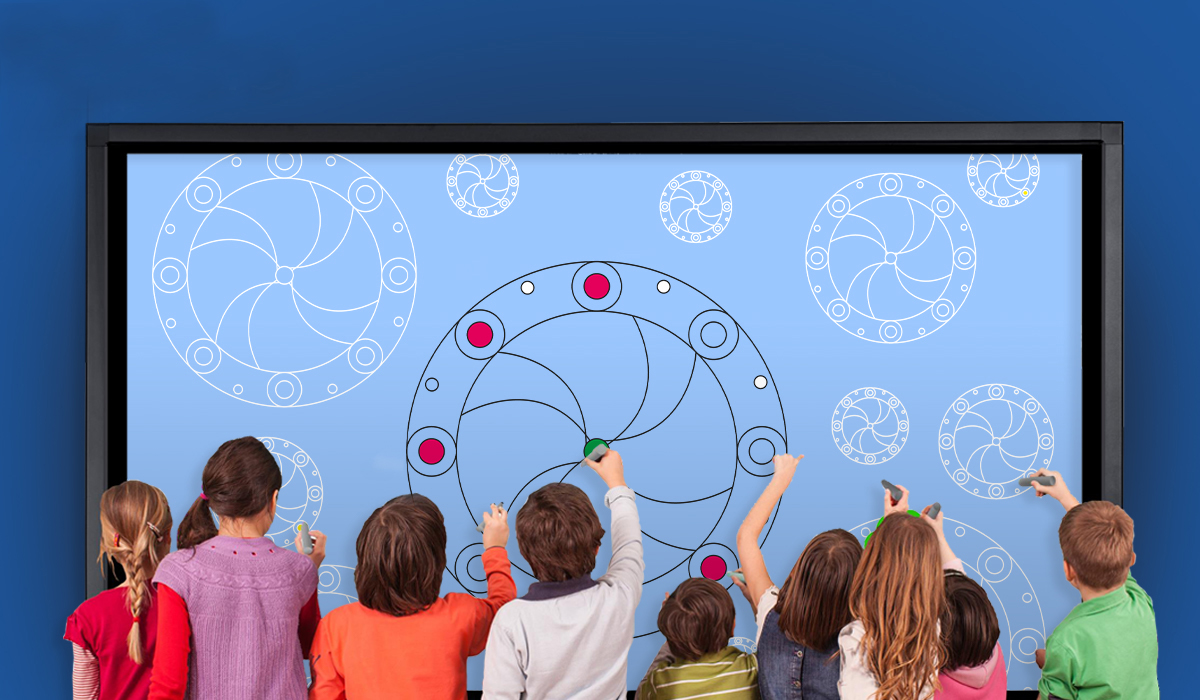
The acronym LIM stands for Interactive Multimedia Whiteboardan interactive surface on which it is possible to write, draw, attach images, play videos and animations. The introduction of this type of solution in Italian schools dates back to 2006 with the aim of equipping all Italian schools with interactive whiteboards. A survey conducted in 2012 showed that 82% of state schools and 18% of parochial schools had one.
How an interactive whiteboard works
Interactive whiteboards are actually a combination of several components: an interactive surface, which is typically the size of a classic whiteboard and with which one can interact using one's hands or special tools, a computer and a projector. Depending on the method of operation of the interactive whiteboard, six different types of whiteboards can be distinguished, the most common of which include:
Infrared interactive whiteboard:
use a sensing system located at the sides of the screen, this system (consisting of a grid of infrared beams) reacts when an object interrupts the beams and locates the precise spot where it is positioned. This type of interactive whiteboard does not need proprietary tools for interaction.
Capacitive interactive whiteboards:
With this type of board, one can interact with both fingers and proprietary tools; they are based on measuring the difference in electrical capacitance at the point of contact with the glass or film covering the screen of a conductive object.
Electromagnetic interactive whiteboards:
Moving a pen over these boards creates a magnetic field, or alters the magnetic field produced by the board, allowing the exact point of contact to be calculated. One can only interact with these blackboards with proprietary tools.
Involvement in education with interactive whiteboards
Interactive Whiteboards, just like the rest of the technology currently present in schools, are not the solution to every teaching problem but they are, without doubt, a great help and support to the teaching (and learning) processes.
Using an interactive whiteboard during lessons allows students, for example, to use different senses: visual, auditory, learning-by-doing (kinaesthetic). This approach, aided by a technological medium, also makes it possible to meet the new cognitive needs expressed every day by so-called 'digital natives'. It has been demonstrated, moreover, that thanks to the characteristics of the interactive whiteboard, it is possible to stimulate students' learning by acting directly on:
- Motivation, thanks to the students' hands-on involvement in the use of the interactive whiteboard itself
- Memory, associated with the sense of sight that favours more immediate learning
- Inclusion, thanks to the cooperation established between the students and the possibility for all students to use the interactive whiteboard independently
- Attention, which is especially accentuated in the youngest children who are most attracted to what is happening on the interactive whiteboard
Conclusion
Certainly, there are still many steps possible within schools in the adoption of modern teaching technologies, although they started in 2006 with the introduction of interactive whiteboards.
Today, a new important step has been taken by increasingly talking about interactive monitors, which actually have a lot in common with interactive whiteboards - although the underlying technology is very different - we can extend the strengths of interactive whiteboards to them as well.
Having innovative, interactive and transversal tools is the first step towards a completely new didactics that can lead, if properly used, to lifelong learning that is easier and more engaging for students.
